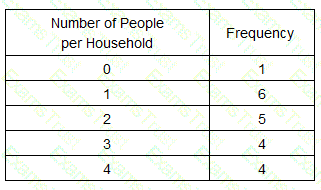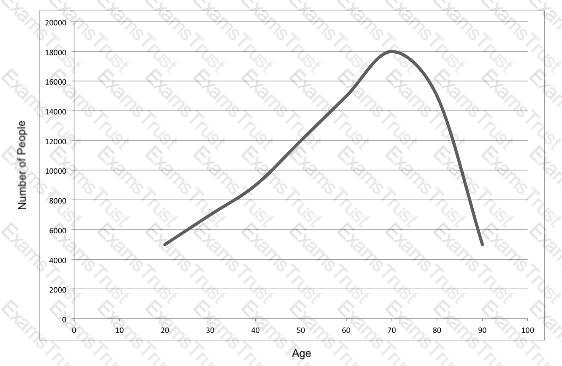The table below shows the distribution of the number of people in each household in a village.

Determine which of the following inequalities is true for the number of people living in a house.
Calculate the total area enclosed by the x-axis and the function below, between x = 1.5 and x = 2.
f(x) = 2x3
The graph shows the frequency distribution of the age of people with a certain kind of insurance contract.

Describe the shape of the underlying data.
1/5 of actuarial students like skiing.
2/5of actuarial students like snowboarding.
1/3 of actuarial students like skiing and snowboarding.
Calculate the proportion of actuarial students that like skiing or snowboarding.
A)

B)

C)

D)

Identify the meaning of: | x | > 5
Define the standard deviation of a finite data set.
Calculate the determinant of the product of the matrices given below:

For random variable X, use the following statistics to calculate its coefficient of skewness based on central moments.
E(X) = 3.940
E(X2) = 21.466
skew(X) = E[(X - μ)3] = 6.008
State what the limit of a function with input variable x represents.